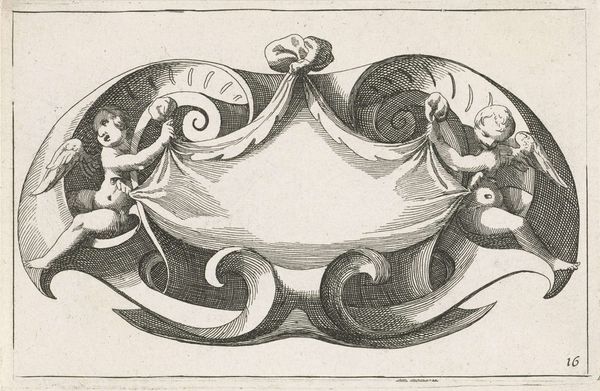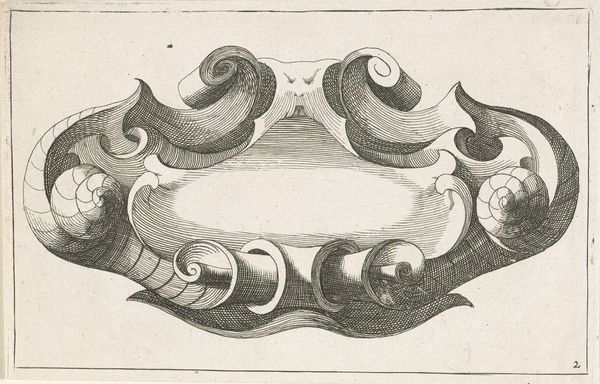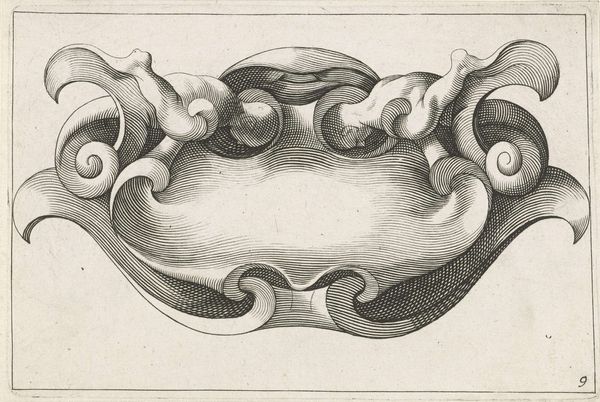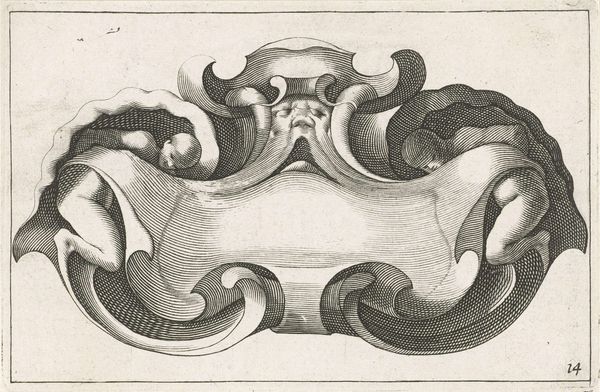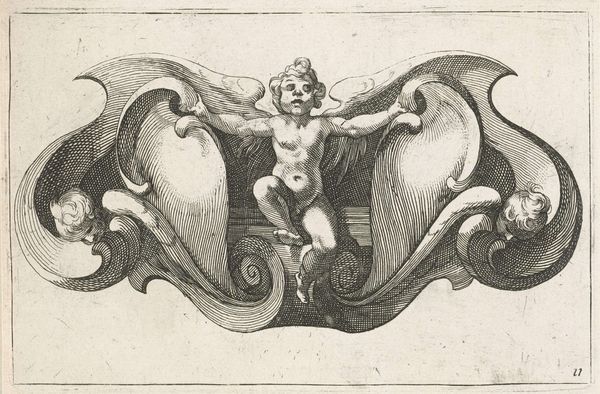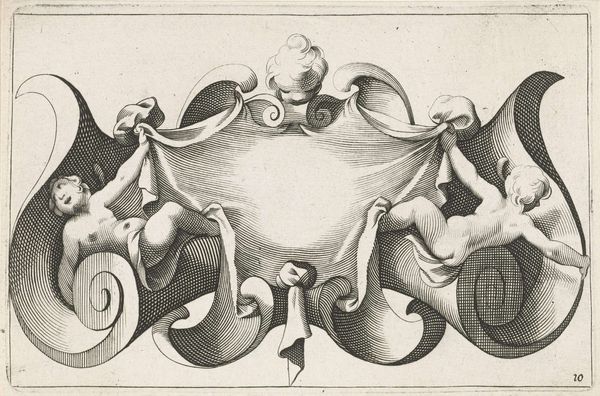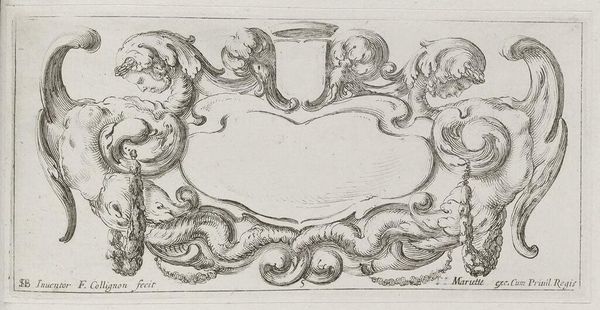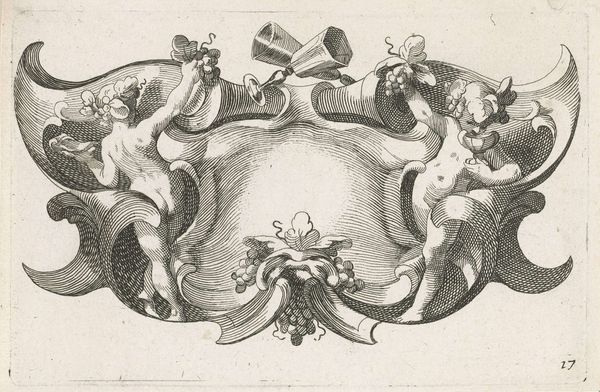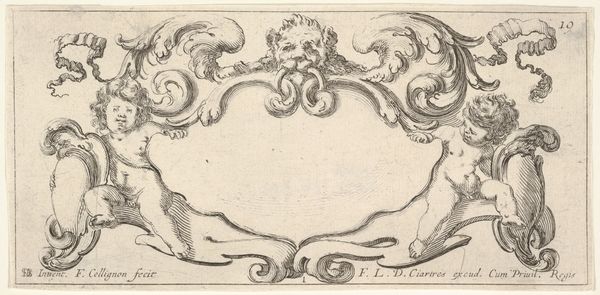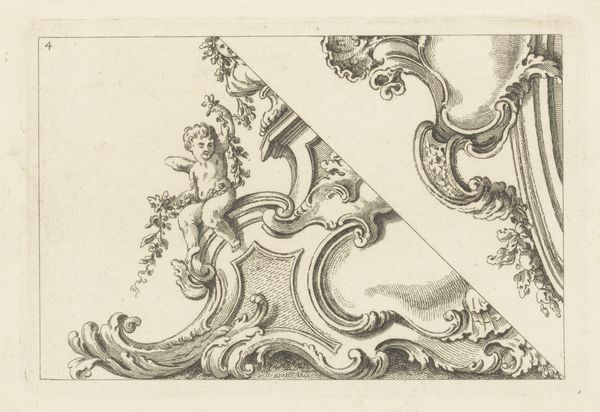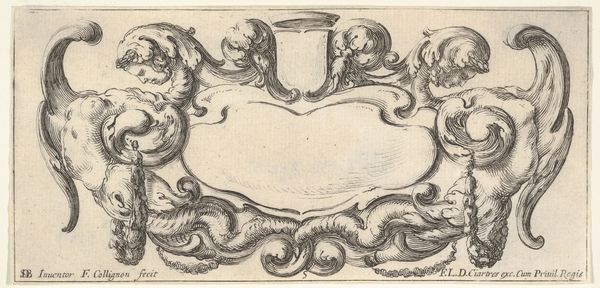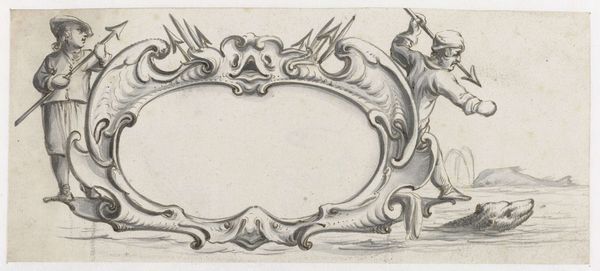
print, engraving
#
baroque
# print
#
pen sketch
#
figuration
#
pen-ink sketch
#
line
#
pen work
#
genre-painting
#
nude
#
engraving
Dimensions: height 105 mm, width 162 mm
Copyright: Rijks Museum: Open Domain
This horizontal cartouche with nude satyrs and a cherub was made anonymously. The print provides an empty space, framed by a decorative structure, for the insertion of text or an image. Cartouches were extremely popular in the Netherlands in the 17th century. They were used across a wide variety of media and served both aesthetic and functional purposes. You can see these designs in architectural features, furniture, and printed materials such as maps or title pages. The visual vocabulary draws heavily on classical antiquity, but the meanings have changed. Satyrs, figures from classical mythology, are shown here as mischievous but harmless. The cherub at the top provides a sense of innocence and beauty. To understand this print better, scholars consult emblem books, design manuals, and the broader history of printing and publishing in the Dutch Golden Age. This cartouche shows us how art can be understood as deeply embedded in its social and institutional context.
Comments
No comments
Be the first to comment and join the conversation on the ultimate creative platform.
